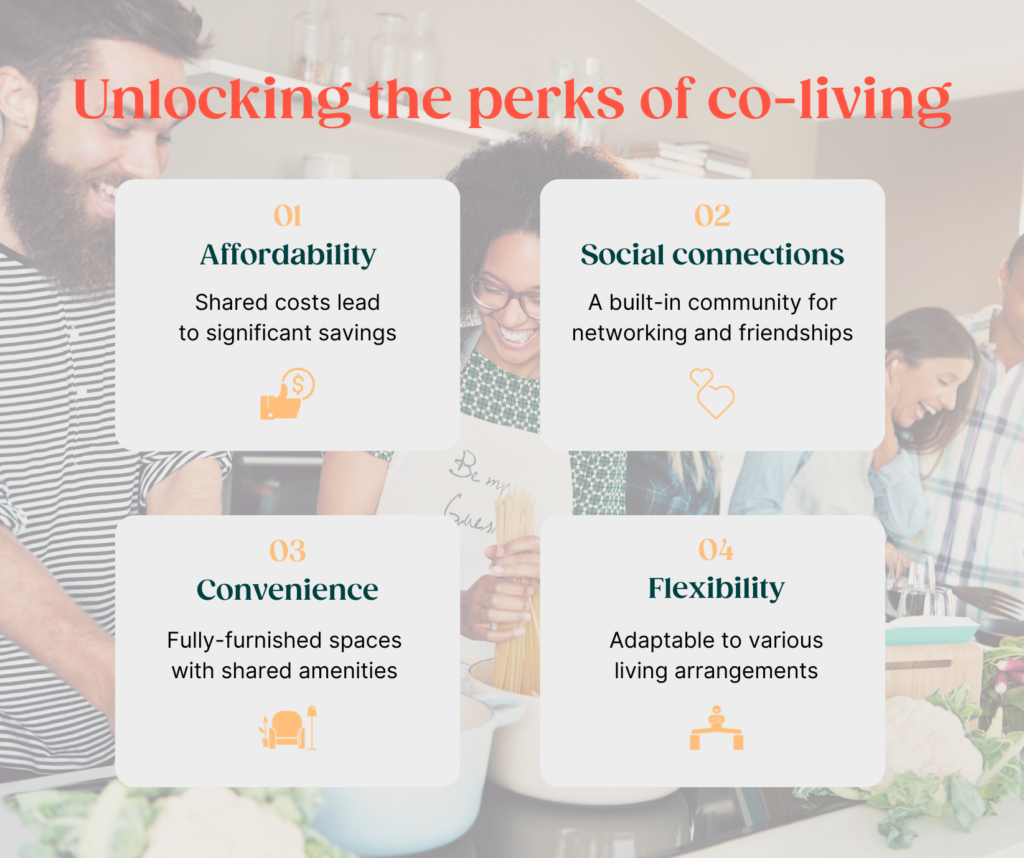Co-living: a modern solution to housing challenges and financial crisis in Belgium
In an era of rapidly changing demographics, economic uncertainty, and housing shortages, the concept of co-living is gaining momentum as a unique solution to a multitude of problems. Co-living offers an innovative approach to urban living, bridging the gap between housing affordability, social connectedness, and sustainable living. This article explores the concept of co-living, its perks, and the reasons why real estate investors should consider it. We’ll also delve into the crucial role architects play in creating co-living spaces and spotlight some of the key players changing the co-living scene in Belgium, such as Ikoab, Cohabs, and Colive.
What is co-living?
Co-living is a housing concept that involves multiple individuals or households sharing a single residence or building, creating a sense of community and fostering social connections. It’s not just about sharing living spaces; it’s a lifestyle choice that seeks to address various societal challenges.
Perks of co-living
- Affordability: co-living can significantly reduce the cost of living, especially in urban areas where housing prices are soaring. Rent and utility bills are shared, making it a financially viable option for many.
- Social connections: shared houses allow social interaction and community building. They provide opportunities for networking, sharing experiences, and developing lasting friendships.
- Convenience: many co-living spaces come fully furnished, eliminating the need to buy and transport furniture. They often offer amenities such as communal kitchens, lounges, and even coworking spaces, simplifying daily life.
- Flexibility: co-living is adaptable to various living arrangements. It can cater to students, young professionals, families, and even seniors, providing a flexible housing solution for diverse needs.
Why Real Estate investors should consider co-living?
Real estate investors should consider co-living for several compelling reasons:
- Strong demand: the demand for co-living spaces is steadily growing as more people seek affordable, community-focused housing options in urban areas.
- High returns: co-living properties tend to generate higher rental income than traditional rentals due to multiple tenants sharing the costs.
- Diverse portfolio: including co-living properties in a real estate portfolio diversifies investments, reducing risks associated with market fluctuations.
- Sustainability: many co-living spaces are designed with sustainability in mind, appealing to environmentally-conscious tenants.
Architects’ role in creating such spaces
Architects play a vital role in the success of co-living spaces as they must balance aesthetic appeal, functionality, and communal design. They are responsible for space optimization, which involves maximizing space utilization to accommodate multiple tenants comfortably, often requiring innovative room layouts and efficient common areas. Furthermore, architects design co-living spaces with a community-focused approach, creating communal areas that invite socialization, such as shared kitchens, dining spaces, and lounges. It is essential to ensure that while promoting community, architects also design for individual privacy, ensuring each tenant has a comfortable and private living space within the larger co-living environment. Additionally, architects can incorporate sustainable design elements, such as energy-efficient lighting and heating systems, to align with the eco-conscious preferences of many co-living tenants.
What about co-living in Belgium?
Brussels has seen a surge in co-living providers, each offering unique approaches to this housing model. Some prominent actors in the Belgian co-living scene include:
1/ IKOAB: Ikoab focuses on creating shared living spaces in beautiful, historic buildings, offering a blend of heritage and modernity.
2/ COHABS: Cohabs is known for its diverse and stylish co-living options in Brussels and beyond. Their properties are designed for a range of tenants, from students to working professionals.
3/ COLIVE: Colive offers fully-furnished co-living spaces with an emphasis on sustainable living. They prioritize eco-friendly features, such as solar panels and rainwater harvesting.

In conclusion, co-living is more than a trend; it’s a solution to the challenges of modern urban living. Real estate investors, architects, and co-living providers in Belgium and around the world are recognizing its potential to address housing problems, financial crises, and the need for social connectedness. With innovative designs and a community-focused approach, co-living is reshaping the way we live and interact in our cities, offering a brighter and more sustainable future for urban dwellers.
Stay in the loop with Real Estate innovations. Follow Kingsley on LinkedIn for the latest updates and opportunities!
